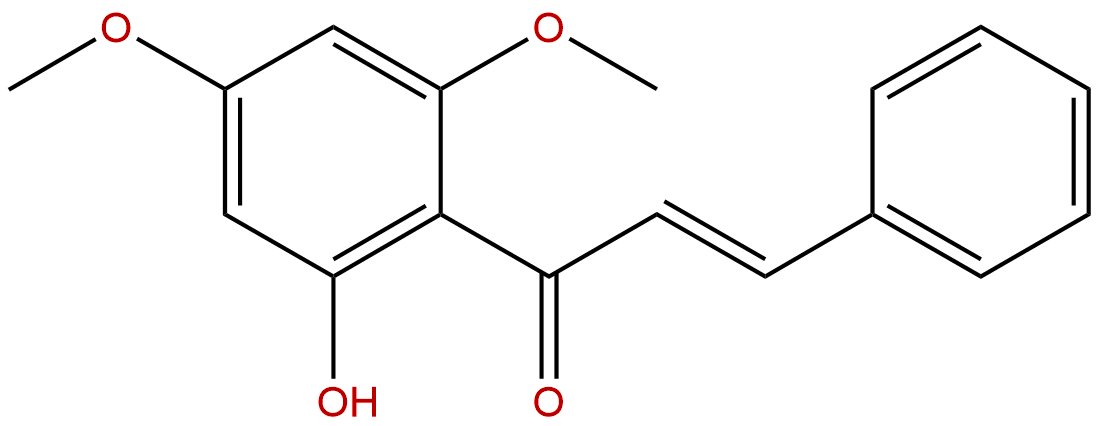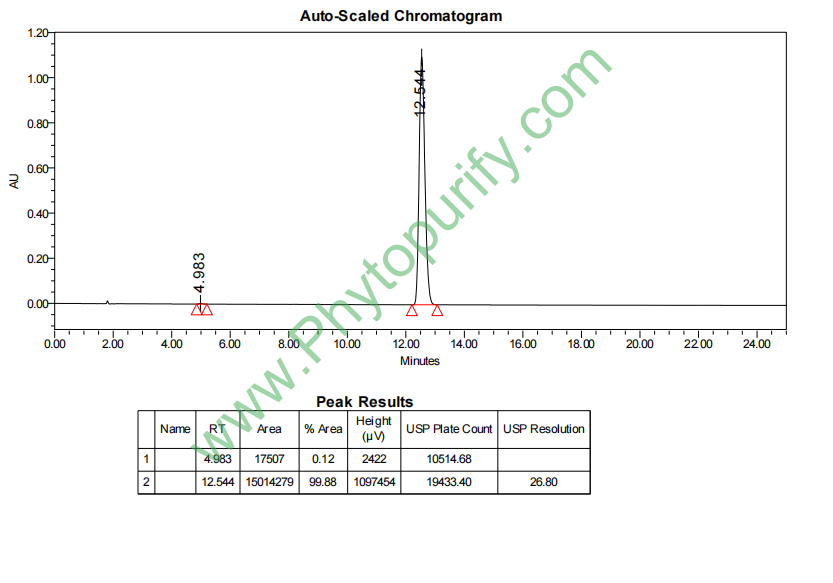
Flavokawain BCAS No.:1775-97-9
|
||||||||||
 |
|
|
||||||||

| Catalogue No.: | BP3146 |
| Formula: | C17H16O4 |
| Mol Weight: | 284.311 |
Product name: Flavokawain B
Synonym name:
Catalogue No.: BP3146
Cas No.: 1775-97-9
Formula: C17H16O4
Mol Weight: 284.311
Botanical Source:
Physical Description: Yellow powder
Type of Compound: Chalcones
Purity: 95%~99%
Analysis Method: HPLC-DAD or/and HPLC-ELSD
Identification Method: Mass, NMR
Packing: Brown vial or HDPE plastic bottle
The product could be supplied from milligrams to grams. Inquire for bulk scale.
We provide solution to improve the water-solubility of compounds, thereby facilitating the variety of activity tests and clinic uses.
For Reference Standard and R&D, Not for Human Use Directly.
Description:
Flavokawain B, the hepatotoxic constituent from kava root, induces GSH-sensitive oxidative stress through modulation of IKK/NF-κB and MAPK signaling pathways. Flavokawain B has potent anti-inflammatory, and anti-cancer activities, it can significantly inhibit production of NO and PGE2 in LPS-induced RAW 264.7 cells. Flavokawain B acts through ROS generation and GADD153 up-regulation to regulate the expression of Bcl-2 family members, thereby inducing mitochondrial dysfunction and apoptosis in HCT116 cells.
References:
Arch Biochem Biophys. 2014 Jul 15;554:44-54.
The chalcones cardamonin and flavokawain B inhibit the differentiation of preadipocytes to adipocytes by activating ERK.
We treated 3T3-L1 cells with a panel of 46 polyphenols and measured intracellular lipid accumulation by Sudan II staining. Four of them, including cardamonin and Flavokawain B, inhibited lipid We searched for polyphenols capable of inhibiting the lipid accumulation in 3T3-L1 cells, and investigated the mechanisms of two effective chalcones cardamonin and Flavokawain B on differentiation of preadipocytes.
METHODS AND RESULTS:
We treated 3T3-L1 cells with a panel of 46 polyphenols and measured intracellular lipid accumulation by Sudan II staining. Four of them, including cardamonin and Flavokawain B, inhibited lipid accumulation. In the further study, cardamonin and Flavokawain B inhibited lipid accumulation by downregulating the expression of CCAAT/enhancer binding protein (C/EBP)-β, C/EBPα, and peroxisome proliferator-activated receptor-γ (PPARγ) at both mRNA and protein levels. Cardamonin and Flavokawain B also increased phosphorylation of extracellular signal-regulated kinase (ERK) in the early phase of adipocyte differentiation. PD98059, an ERK inhibitor, restored C/EBPβ, PPARγ expression and intracellular lipid accumulation in adipocytes. Moreover, cardamonin and Flavokawain B also modulated the secretion of C-reactive protein, dipeptidyl peptidase IV, interleukin-6, tumor necrosis factor-α and fibroblast growth factor-21 in mature adipocytes.
CONCLUSIONS:
These results indicate that ERK activation and consequent downregulation of adipocyte-specific transcription factors are involved in the inhibitory effects of the chalcones cardamonin and Flavokawain B on adipocyte differentiation. Moreover, cardamonin and Flavokawain B are able to modulate secretion of adipokines in mature adipocytes.
Drug Des Devel Ther. 2015 Mar 6;9:1401-17.
In vivo antitumor and antimetastatic effects of flavokawain B in 4T1 breast cancer cell-challenged mice.
Flavokawain B (FKB) is a naturally occurring chalcone that can be isolated through the root extracts of the kava-kava plant (Piper methysticum). It can also be synthesized chemically to increase the yield. Flavokawain B is a promising candidate as a biological agent, as it is reported to be involved in a wide range of biological activities. Furthermore, Flavokawain B was reported to have antitumorigenic effects in several cancer cell lines in vitro. However, the in vivo antitumor effects of Flavokawain B have not been reported on yet.
METHODS AND RESULTS:
As presented in our study, Flavokawain B induced apoptosis in 4T1 tumors in vivo, as evidenced by the terminal deoxynucleotidyl transferase dUTP nick end labeling and hematoxylin and eosin staining of the tumor.Flavokawain B also regulated the immune system by increasing both helper and cytolytic T-cell and natural killer cell populations. In addition, Flavokawain B also enhanced the levels of interleukin 2 and interferon gamma but suppressed interleukin 1B. Apart from that, Flavokawain B was also found to inhibit metastasis, as evaluated by clonogenic assay, bone marrow smearing assay, real-time polymerase chain reaction, Western blot, and proteome profiler analysis.
CONCLUSIONS:
All in all, Flavokawain B may serve as a promising anticancer agent, especially in treating breast cancer.
HPLC of Flavokawain B
